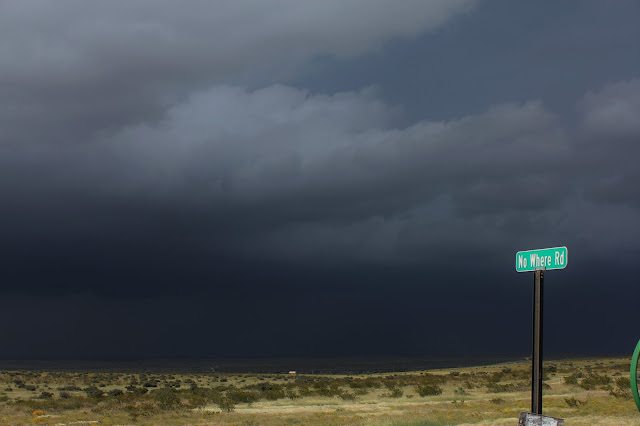Severe Weather Awareness Week - Today's Topic "Skywarn".
| The SKYWARN Program | |
SKYWARN is a public safety partnership between the National Weather Service (NWS), local emergency managers (EMs) and the general public. The NWS provides training to storm spotters while the EMs are more involved with the organization and logistical end of scheduling training and organizing the groups. The NWS works closely with emergency managers and officials across New Mexico to organize and schedule spotter training classes each year. For a listing of presentations, please visit the SKYWARN Schedule page.
Typically, the NWS calls the local EM to activate area spotters when significant or widespread severe weather is expected. Once activated, spotter groups relay their reports through the EM or his designee to the NWS. This implies that spotters will have rapid two-way field communications (e.g. law enforcement, highway department workers, volunteer or professional fire fighters and local amateur radio operators working with amateur radio emergency services (ARES) groups). We also welcome individuals that wish to operate as independent SKYWARN participants and who can report from their home and/or while in the field.
Each year, the NWS and American Radio Relay League (ARRL) organize a special SKYWARN Recognition Day. It celebrates the contributions that volunteer SKYWARN radio operators make to the NWS. During the full day event, SKYWARN operators visit NWS offices and contact other radio operators across the world.
| |
The critical common element will be a capability to maintain communications with one of our forecast offices. To that end, spotters are encouraged to obtain an amateur radio license in order to participate in ARES SKYWARN groups. This ensures rapid and direct communication with our office, using a well organized amateur radio repeater system. Those SKYWARN participants who are independent of more formal groups call NWS Albuquerque, El Paso or Midland with field reports whenever hazardous weather is observed. If you agree to be added to our spotter list, then NWS personnel may, at times, initiate a call to you or call you directly once they are aware that you are available and reporting from a field location.
| |
| The NWS Amateur Radio Program | |
The NWS Albuquerque office, located on the west side of the Albuquerque Sunport airport, has both 2M and 70CM amateur radio. Vanity call WX5ABQ (WX weather, region 5, and ABQ international identifier for Albuquerque airport and NWS office) is normally used whenever the station is on the air.
For SKYWARN, the NWS offices primarily use the MegaLink repeater system which provides coverage into most of the NWS office's county warning areas. The Albuquerque office may also use several of the Upper Rio FM Society repeaters (146.940 or 146.900) as well as other local repeaters from near Santa Fe (147.200 or 147.300), Los Alamos (145.190), Bernalillo-Rio Rancho (147.100), Belen (146.700) and Socorro (146.680) whenever severe weather threatens along the Rio Grande Valley and over west central New Mexico.
Although we do have a number of staff licensed to operate the amateur stations at all three field offices, there are times when these licensed personnel are not on duty and times when other duties prevent us from monitoring the amateur radio. A guest operator may then be called in to assist us. If you can't raise us directly on the radio, you may check station status or request station activation with a phone call to the toll-free number at the Albuquerque office: 1-888-386-7637 or via the Upper Rio FM auto-patch using codes 365 or 9365 (after hours emergency phone patch). For more general SKYWARN information for West Texas, click here.
Spotters can contribute snow and road condition reports as well as heavy rain and severe thunderstorm reports. We encourage both home location reporting and reports from spotters that may be traveling across the state.
Have you designated a central contract point within a amateur spotter group? It's usually best to have one to two folks designated as primary group contact points. This helps us request spotter activation and then manage reports during an event. It's left up to the group to decide whether to communicate as a group on a local repeater or simplex and then have someone relay reports to us via MegaLINK, other repeater or by phone. However, please let us know which frequency the group uses so we can monitor if possible.
| |
| Additional Links | |
The Truth Is Stranger Than Fiction!
My Web Page Is Best Viewed With Google Chrome.




















Comments
Post a Comment
Your comments, questions, and feedback on this post/web page are welcome.